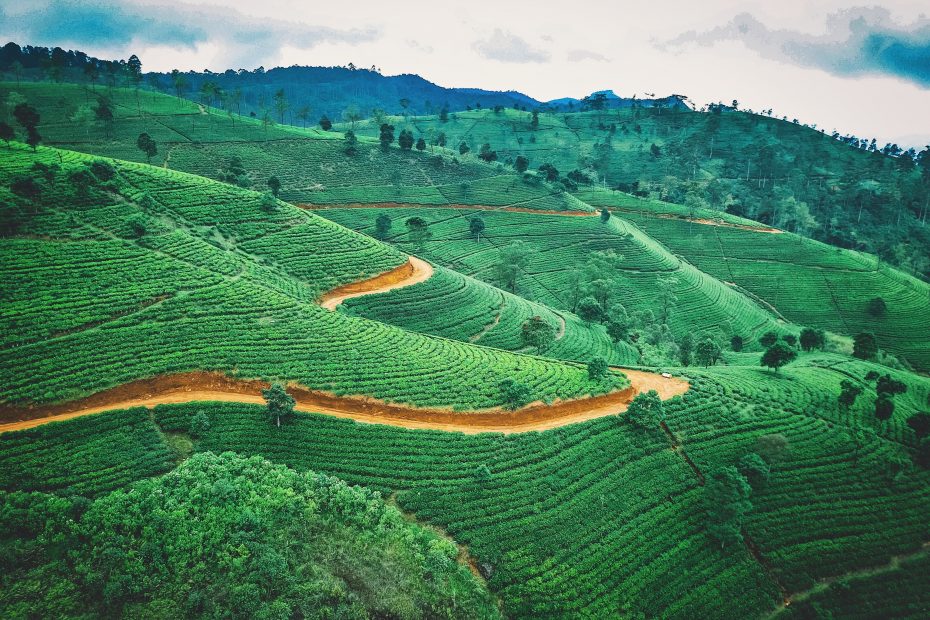Tea From Sri Lanka: Happiness In Emerald Green
How many times have you bought tea by randomly selecting a box from the shelf? It happened to me many times before I left for Sri Lanka. After experiencing the tea plantations and the attached factory, choosing tea is no longer the same. Sri Lankan tea is pure happiness bathed in emerald green.
Sri Lankan tea is a symbol of national identity-think that the national cricket team is sponsored by Ceylon Tea-and it is one of the aspects by which the country is known abroad since it is the fourth largest producer of tea in the world.
Tea harvesting is done by hand by Tamil women whose garish saris stand out against the emerald green of the plantations. With passion and dedication they collect a fixed amount of about 20-30 kg per day, which are then taken to the factory for processing.
History of tea in Sri Lanka
Tea was introduced to Sri Lanka in the 19th second by the British after failing with coffee cultivation. It was first cultivated in 1867 near Kandy. The successful experiment decreed the Hill Country area as an area with the ideal characteristics for growing tea: warm climate, suitable altitude and sloping terrain.
In the years that followed, production grew significantly to the extent that tracts of rainforest were cut down to expand tea plantations.
Sri Lanka with a production of 340 thousand tons stands as the fourth largest tea producer in the world and is spread under the Ceylon Tea brand.
Experiences to do: visit the plantations and tea factory
One of the experiences to have while traveling to Sri Lanka is to learn about the world of tea through a visit to the plantations and one of the factories in the Hill Country area. In this central area, despite the altitude, tea plants are grown in terraces ordered in long rows spaced just far enough apart to water them and grown to a maximum height of 1 meter.
After harvesting, the leaves are taken to a factory to begin the processing, which has become increasingly refined over the years.
Walking around the factory, one has the feeling of being immersed in a magical world among the smells, the smiles of the workers and the noise of the machines. A journey of discovery of the processing that with care, dedication and passion offers a special product that maintains its simplicity once packaged.
During the tour of the tea factory, they will explain the history of tea and the stages of processing, ending with an explanation of the different types of tea. Following that, you will be treated to a memorable boiling tea tasting. Tasting tea with a view of the plantations and a stone’s throw from the factory is one of the experiences to have on a trip to Sri Lanka.
The varieties of tea
There are 7 agro-climatic areas in Sri Lanka where tea is grown resulting in a product that is distinctive in color, flavor, aroma, taste and appearance. The tea plantations are scenic, like those encountered in the Hill Country, and production is carried out by hand-harvesting and an artisanal method that has remained unchanged for more than a century.
Sri Lankan tea is classified according to several factors, including leaf size and variety. Powdered tea is of an inferior type while leaf teas are considered better for making a good brew.
Sabaragamuwa: exceptionally elegant
The appearance of the leaf is elegant and the particle size is larger. In addition, the leaf once dried is very dark and this is what makes the tea deep red in color.
Ruthuna: typically unique
The tea grows about 610 meters above sea level and the condition of the soil makes the leaves darker giving the brew a strong and distinctive taste. It is suitable for those who like thick, sweet tea, even without milk.
Kandy: Intensely full-bodied
Kandy tea is grown in the center of the country in plantations from 610 to 1219 meters above sea level and is a full-bodied variety. It is ideal for those who want a strong tea full of flavor; we recommend serving it with milk.
Grape: Exotically aromatic
It grows at an altitude between 914 and 1521 meters above sea level in the central mountains of Sri Lanka and has a unique flavor. This variety of Grape tea is used in many different blends, although many enjoy it on its own.
Dimbula: Pleasantly ripe
Aided by temperatures with dry cold and monsoon rains, Dimbula tea ranges from full-bodied to light and delicate. It is the most famous name associated with “Ceylon Tea.”
Uda Pussellawa: delectably savory
Depending on the season, tea grown in the Uda Pussellawa mountain range produces two distinct types of tea.
Nuwara Eliya: exquisitely savory
Nuwara Eliya tea is unique. It is grown at an altitude of 1902 meters above sea level and produces a delicate cup of tea.
Sri Lankan tea is to be savored, enjoyed with the slow pace typical of the East, that sense of peace and serenity that manages to make the days special.
In Sri Lanka, one can have a variety of tea-related experiences:
- Observing tea plantations through a local train ride
- Trekking or mountain biking among the plantations
- Picking tea together with Tamil women
It is certainly one of the must-do experiences in Sri Lanka to get to know and glimpse one of the aspects that will be forever etched in your memories, even after you return home. And when you take a break sipping Sri Lankan tea the feelings of happiness in the emerald green will resurface in your mind.
